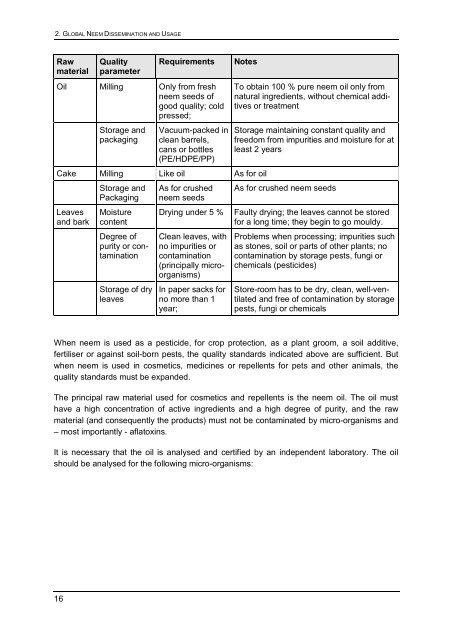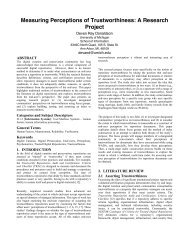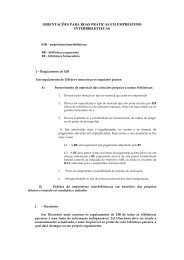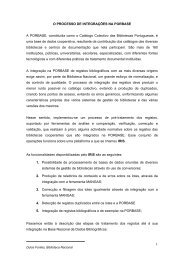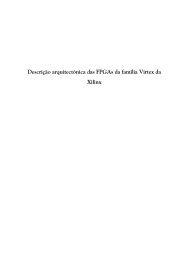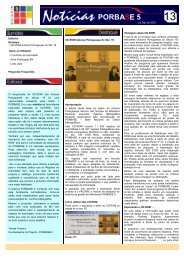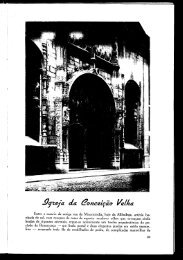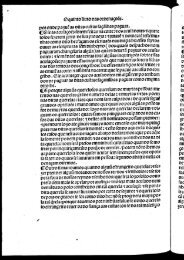Status report on global Neem usage - Biblioteca Nacional de Portugal
Status report on global Neem usage - Biblioteca Nacional de Portugal
Status report on global Neem usage - Biblioteca Nacional de Portugal
Create successful ePaper yourself
Turn your PDF publications into a flip-book with our unique Google optimized e-Paper software.
2. GLOBAL NEEM DISSEMINATION AND USAGE<br />
Raw<br />
material<br />
16<br />
Quality<br />
parameter<br />
Requirements Notes<br />
Oil Milling Only from fresh<br />
neem seeds of<br />
good quality; cold<br />
pressed;<br />
Storage and<br />
packaging<br />
Vacuum-packed in<br />
clean barrels,<br />
cans or bottles<br />
(PE/HDPE/PP)<br />
Cake Milling Like oil As for oil<br />
Leaves<br />
and bark<br />
Storage and<br />
Packaging<br />
Moisture<br />
c<strong>on</strong>tent<br />
Degree of<br />
purity or c<strong>on</strong>taminati<strong>on</strong><br />
Storage of dry<br />
leaves<br />
As for crushed<br />
neem seeds<br />
To obtain 100 % pure neem oil <strong>on</strong>ly from<br />
natural ingredients, without chemical additives<br />
or treatment<br />
Storage maintaining c<strong>on</strong>stant quality and<br />
freedom from impurities and moisture for at<br />
least 2 years<br />
As for crushed neem seeds<br />
Drying un<strong>de</strong>r 5 % Faulty drying; the leaves cannot be stored<br />
for a l<strong>on</strong>g time; they begin to go mouldy.<br />
Clean leaves, with<br />
no impurities or<br />
c<strong>on</strong>taminati<strong>on</strong><br />
(principally microorganisms)<br />
In paper sacks for<br />
no more than 1<br />
year;<br />
Problems when processing; impurities such<br />
as st<strong>on</strong>es, soil or parts of other plants; no<br />
c<strong>on</strong>taminati<strong>on</strong> by storage pests, fungi or<br />
chemicals (pestici<strong>de</strong>s)<br />
Store-room has to be dry, clean, well-ventilated<br />
and free of c<strong>on</strong>taminati<strong>on</strong> by storage<br />
pests, fungi or chemicals<br />
When neem is used as a pestici<strong>de</strong>, for crop protecti<strong>on</strong>, as a plant groom, a soil additive,<br />
fertiliser or against soil-born pests, the quality standards indicated above are sufficient. But<br />
when neem is used in cosmetics, medicines or repellents for pets and other animals, the<br />
quality standards must be expan<strong>de</strong>d.<br />
The principal raw material used for cosmetics and repellents is the neem oil. The oil must<br />
have a high c<strong>on</strong>centrati<strong>on</strong> of active ingredients and a high <strong>de</strong>gree of purity, and the raw<br />
material (and c<strong>on</strong>sequently the products) must not be c<strong>on</strong>taminated by micro-organisms and<br />
– most importantly - aflatoxins.<br />
It is necessary that the oil is analysed and certified by an in<strong>de</strong>pen<strong>de</strong>nt laboratory. The oil<br />
should be analysed for the following micro-organisms:


